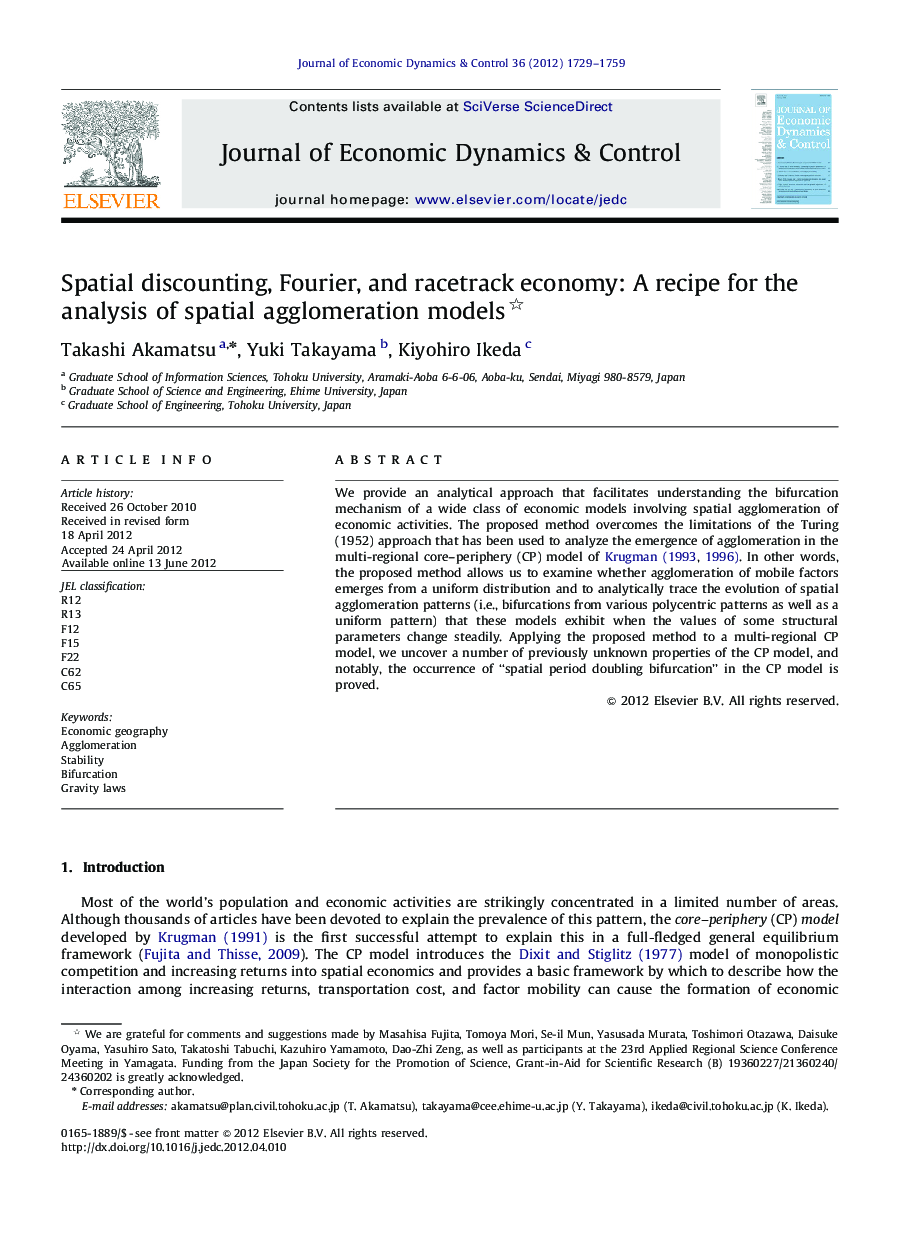| Article ID | Journal | Published Year | Pages | File Type |
|---|---|---|---|---|
| 5098926 | Journal of Economic Dynamics and Control | 2012 | 31 Pages |
Abstract
We provide an analytical approach that facilitates understanding the bifurcation mechanism of a wide class of economic models involving spatial agglomeration of economic activities. The proposed method overcomes the limitations of the Turing (1952) approach that has been used to analyze the emergence of agglomeration in the multi-regional core-periphery (CP) model of Krugman (1993, 1996). In other words, the proposed method allows us to examine whether agglomeration of mobile factors emerges from a uniform distribution and to analytically trace the evolution of spatial agglomeration patterns (i.e., bifurcations from various polycentric patterns as well as a uniform pattern) that these models exhibit when the values of some structural parameters change steadily. Applying the proposed method to a multi-regional CP model, we uncover a number of previously unknown properties of the CP model, and notably, the occurrence of “spatial period doubling bifurcation” in the CP model is proved.
Related Topics
Physical Sciences and Engineering
Mathematics
Control and Optimization
Authors
Takashi Akamatsu, Yuki Takayama, Kiyohiro Ikeda,
